The Long Way Around Can Also Be the Most Direct:
Peter Coffin on Field Tests in Modalities of Consciousness
ON RECORD is a series of dialogues with contemporary artists about the ideas and influences that inspire their works. ON RECORD #5 was conducted in Tokyo and edited by ART iT in collaboration with Peter Coffin.
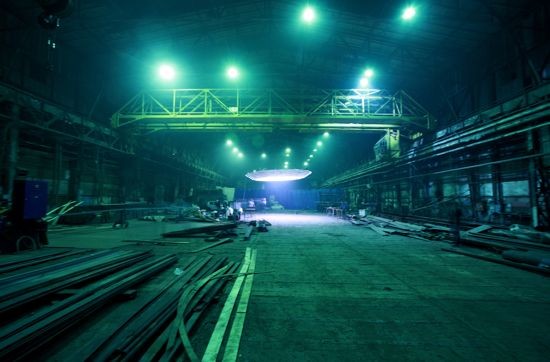 Untitled (UFO) (2008- ), functional flying saucer, appearances: Baltic Sea Region, Gdańsk, Sopot; Southeast Region of Brazil and Rio de Janeiro. All images: Courtesy Peter Coffin Studio.
Untitled (UFO) (2008- ), functional flying saucer, appearances: Baltic Sea Region, Gdańsk, Sopot; Southeast Region of Brazil and Rio de Janeiro. All images: Courtesy Peter Coffin Studio.We had almost completed a full circuit of the 16th-century Japanese garden adjacent to the New Otani Hotel, itself one of the locations of the 1967 James Bond film You Only Live Twice and not far from the Imperial Gardens. Our walk included a detour up a wooded service road, a pause in front of the garden’s waterfall, and a hike up a small hill that led past a mysterious installation of an idle projector in a weatherproof case placed across the pathway from a freestanding square glass panel.
The weather was sunny with a slight chill, and we were sitting on a bench next to a small pine tree overlooking a pond. Helicopters periodically flew overhead and at other times the din of construction work could be heard from beyond the hotel complex. We had agreed that day to discuss the idea that “things aren’t always what they seem.”
“During our walk you were telling me about your Untitled (UFO) project, for which you worked with a sociologist and a PR company. You were interested in encouraging people to think about what the UFO phenomenon represents psychologically. So you created a UFO with a production company called Cinimod Studios and it has flown twice in the past few years, once over the Baltic Sea near Gdansk, Poland, in 2008 and again off the coast of Brazil and Rio de Janeiro in 2009. You told me that it was designed as a kind of archetypical flying saucer based on references from various sources: fictional descriptions, television, and movies. The result was a seven-meter wide flying saucer with thousands of lights that produced a dynamic spectacle in the sky. Why did you do the project?”
[Before we speak about the UFO and the idea that things aren’t always what they seem, I want to point out that it’s appropriate that we’re in a Japanese garden. These gardens are designed to integrate illusions of scale and depth in space. They’re meant to encourage us to think about and experience space and time differently.]
[I’ll tell you how I decide on an artwork and it will shed some light on the UFO project. I happen to think of it as more of an experiment and I’ll explain what I mean. I usually choose a subject matter that will end up being about more than what it appears to be about and that inspires ideas beyond it. I’ll hope it encourages a reevaluation of the subject and a new engagement with it. In this way it may even take on a life of its own. This is an approach I take with my work because art ends up being useful for encouraging alternatives to the rational sensibility that tends toward fixed meaning. I’m interested to generate something beyond representation for the sake of engaging further inquiry. I don’t pretend to have control of the meaning an art experience inspires but am happy to try and catalyze it.]
[I chose to realize the UFO project because I was interested to think about the nature of the collective conscious, and used this subject to explore how we think about ourselves in our reality. This approach – using a subject to explore something else – is rooted in a desire to understand how we think, instead of just what we think, so that the subject is useful for bringing new perspectives into consideration. I am not really interested in UFOs, but found that taking a look at the UFO phenomenon the way we did was useful in thinking about the psychology of belief and fantasy.]
[I mentioned that the UFO project was a kind of experiment. We didn’t predict how it would be received and how people would react to the UFO although we had some inclinations of what may happen having looked at psychology studies concerned with ‘fantasy prone projection’ and other themes in psychology that have to do with belief. The experiment was meant to allow the experience to take its own course, unscripted. I decided to not create a ‘shock-and-awe’ kind of experience you’d associate with a UFO. The UFO was announced in advance and we were aware that not everyone who may see the UFO would have had advance knowledge of it. This is something I wanted the project to capitalize on. To this end we worked with a small group of sociologists and the local press in the Baltic Sea region and again later in Brazil, anticipating some interesting dialogue and exchanges between those who knew and those who did not. The sociologists who participated, gaged the responses and involved people in the dialogue about it before, during and after.]
[We got involved in thinking about what the experience represented for people but were not aspiring to draw any conclusions about what was happening – just some creative cogitation. With projects like this I want to generate an experience that engages further inquiry. Most of the people who saw the UFO without prior knowledge of its presence were surprised and reached out to friends or family to learn more. Their exchanges with people who witnessed the UFO and had previous knowledge of it generated discussions about knowledge and belief, human consciousness and the inclination to connect with unknown things, which seems to be at the heart of the UFO phenomenon. Many wondered about the desire people have to connect with other life and the curiosity about a more advanced life like what people imagine visit us on earth in UFOs. There was a lot of discussion about the future and our connection to it, which led us to wonder whether the UFO phenomenon inspires people to compare themselves to a kind of future self that may be embodied in the ideas our culture generates about intelligent extraterrestrial life.]
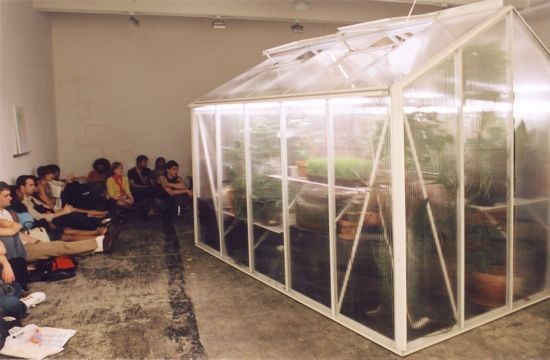
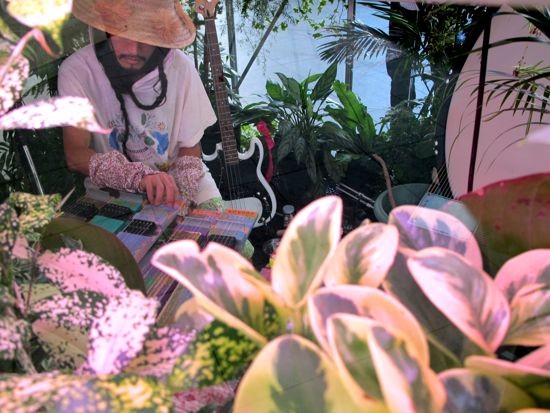
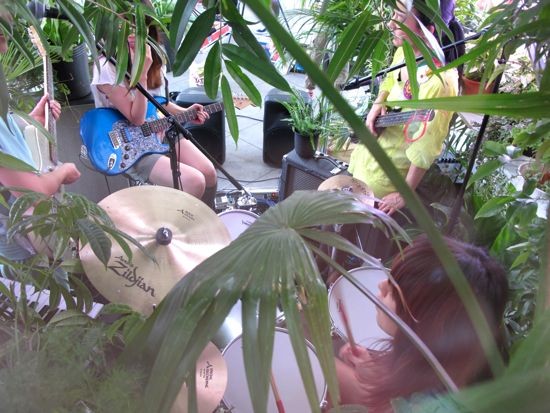 Top: Untitled (Greenhouse) (2002), greenhouse, plants, speakers, soundtrack, sound system, musical instruments. Middle: Yamataka EYE performing in Untitled (Greenhouse) at the 4th Yokohama Triennale, 2011. Bottom: OOIOO performing in Untitled (Greenhouse) at the 4th Yokohama Triennale, 2011.
Top: Untitled (Greenhouse) (2002), greenhouse, plants, speakers, soundtrack, sound system, musical instruments. Middle: Yamataka EYE performing in Untitled (Greenhouse) at the 4th Yokohama Triennale, 2011. Bottom: OOIOO performing in Untitled (Greenhouse) at the 4th Yokohama Triennale, 2011.“You mentioned earlier that a reference point for the this project was Carl Jung’s treatise on the UFO phenomenon, Flying Saucers: A Modern Myth of Things Seen in the Skies, which was published in 1952. Jung’s ideas were less concerned with the reality of flying saucers than with their reality as a socio-psychological and cultural phenomenon. The book was written in the aftermath of World War II and put forward the premise that sightings increase during times of social duress and war, and that the belief in UFOs reflects a desire to escape the self and perhaps connect with some projected self. Was Jung also involved in the Music for Plants genre of music that that was part of the Untitled (Greenhouse) project we discussed earlier?
[Not as far as I know. Carl Jung’s ideas about the social and psychological aspect of the UFO phenomenon are curious to me separate of the work with Music for Plants. But both are driven by a desire to connect with something out of the ordinary, ideas that people have been curious about, ideas that concern belief, ideas that have been popular or unpopular for potentially interesting reasons, ideas that we may want to believe but can’t prove, ideas that solicit the imagination, engage us to project or just generate more questions. It may just be an idea that is absurd and thinking about absurd things is creative. Thinking about why something is absurd is an exercise in thinking. I am attracted to ideas that polarize and are taken seriously by some and not seriously by others. They’re useful to consider in thinking about how we adopt a point of view. They also hint at another perspective that transcends belief or disbelief and may tell us something altogether new. Jokes and riddles can do this occasionally. Anyway, I don’t much care for Jung’s writing but am happy that a respected psychologist took on a subject like the UFO phenomenon – something we can be amused by, find absurd or be drawn to because we’re curious or want to believe in it. Subjects like this are rich and have the capacity to generate interesting questions about how and why we occupy ourselves with the idea of intelligent beings that think and exist differently and visit us in a UFO or the idea that plants have a consciousness and enjoy music, regardless of belief. Jung made a serious study of dreams and was interested to know how the mind works – why we think the way we do. He inspired many people to think about the mind and to learn from what it might tell us about ourselves which is a great accomplishment after the psychological damage of the World War II.]
[The idea of Music for Plants was a kind of conceptual springboard for the Greenhouse project. I built a greenhouse in a gallery as a staging area for experience and experimentation. And as I mentioned, it wasn’t meant to be scientific but still manages to become something like a laboratory every time. The scenario of the work is like a proposition: ‘Here’s the possibility for an experience based on an idea that you may try for yourself.’]
[And again in this situation, I didn’t care for people to think too much about whether plants listen to music or not, just to imagine it. Like an exercise. As you might know, the Music for Plants genre was popular in the 1970s. I wondered why it was popular then and not now. This is just conjecture, but my feeling is that when people bought Music for Plants records they weren’t really committed to playing it for their plants. I think you’d probably find that most people were just interested to know how plants think. This is why I became interested in the idea of this phenomenon. I was sure that there was something else happening that was far more interesting and it was more than just the idea of plants listening to music.]
[How strange to think about what it’s like to experience music as a plant. The moment you’ve entertained the question, ‘What’s it like?’ – you’ve begun to project yourself into the imagined consciousness of a plant. It is an automatic act of creative self-extension. We do this when we mythologize, when we imagine the things we can not experience or know for certain, when we develop a space program to go to places and see things we can only imagine and when we seek new questions. These activities do not concern us by necessity and they’re not, at least immediately useful. We project and extend outside of ourselves using our imagination because it’s in our nature.]
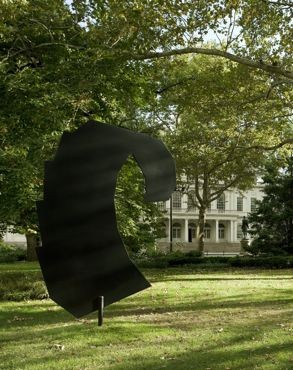
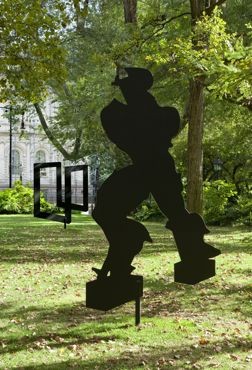
Left: Sculpture Silhouette (R Smithson, “Gyrostasis,” 1968) (2009), powdercoated aluminum, approx 279.5 x 198 x 2.5 cm. Right: In foreground, Sculpture Silhouette (U Boccioni, “Unique Forms of Continuity in Space,” 1913) (2008), powdercoated aluminum, approx 264 x 145 x 2.5 cm; and Sculpture Silhouette (S LeWitt, “Incomplete Cube,” 1974) (2008), powdercoated aluminum, approx 213 x 214 x 2.5 cm.
“You talk about projecting. Is this also what is going on in your Untitled (Sculpture Silhouettes), for which you created monumental, flattened silhouettes of famous sculptural works from art history, ranging from the Venus of Willendorf to Rodin’s Thinker and some iconic contemporary works?”
[It has more to do with abstracting. I wondered about how and in what way these icons remain with us and how they’ve stuck in the mind of culture. I’m aware that there are many factors that influence or determine what gets remembered in art history that are not just the mind at work and that they may be considered in the larger cultural context alongside subjective experience. This project got me thinking about how we interpret and with what perspective we look at something like memory, what our relationship is to it from that perspective. I paired this with an interest in how sculpture is experienced in space and time – in particular perspective. We move around a sculpture and look at it in a way that we might work around an idea; we look at it from different points of view and observe it over time so that we can know it more broadly.]
[The Sculpture Silhouettes have been installed in public parks and in gardens. They’re flat and resemble iconic three-dimensional sculptures devoid of their original volume – objectified in this way as simulacra that seem to hover weightless above the grass. When moving through the space of a park or a garden, the Sculpture Silhouettes seem to change shape by virtue their flatness and our changing point of view. If within a person’s field of view, a Sculpture Silhouette is perpendicular, the representation will appear as we know it in our three-dimensional reality. When the viewer’s perspective has moved to the next 90-degree point of view, it will have gradually become a vertical sliver, unrecognizable and almost invisible – not unlike Duchamp’s idea of the ‘infra-slim.’ The basic experience of the work includes an awareness of what represents a three-dimensional shape is in fact only two-dimensional, and that it’s merely a simplified representation of the reference. While the flat shapes change as we move through the park, they produce an awareness of physical perspective while encouraging a consideration of how we look at and interpret some thing – including its representation or simulacra – from various perspectives in the space of our thought. I’d like the awareness of its changing shape – the result of our physically changing point of view – to occur in tandem with the considerations of the various perspectives with which we look at and think about a referenced image. It is a physical metaphor for the way in which we interact with the idea of a thing like a sculpture, considering the point of view or points of view with which we think about it. For example, the Sculpture Silhouettes go in and out of view as we move through the space, just as their references and all that they signify slip in and out of memory. The purpose of the scenario the work creates is to further abstract the representation and shift attention on interpretation and point of view. Can we look at these representations and understand them differently? Can they be understood in another way without ignoring the memory and associations linked with them if they’re familiar or somehow otherwise recognizable? Questions like this are part of the impetus of these works in space. The way we look at something and interpret its associations and references can be considered in parallel with how we understand them in space.]
“Let’s return to the UFO project. Gdańsk has an interesting history, as it was the first place the Nazis occupied at the beginning of World War II and was the site of German U-boat production. You mentioned that the hangar where the UFO was built was in fact the same hangar where the U-boats were built, and that the UFO was the last project constructed there, as the hangar was razed shortly after. How did that history affect the project?”
[That was an interesting discovery and not something we planned. Gdańsk just became an intriguing location for the context of the UFO project for that reason among others. In the discussions with the sociologists that we worked with during and after the UFO flight, people talked about Poland’s connection to Catholicism and the country’s experience of having endured so many wars. They found this relevant to the discussion of what the UFO represented. The discussion of war, belief and Jung’s idea about UFO sightings as a psychological response to war became part of the dialogue that engendered the work and lent it significance.]
[In my research about the UFO phenomenon I learned that the UFO and the idea of aliens from the ‘red planet’ was a popular surrogate for a fear of communism during the height of the cold war. For people like SunRa who claimed to be connected to intelligent life in outer space, it may very well have been a kind of emancipatory release from social or political restrictions in a still racist society. The UFO phenomenon and the desire to connect with intelligent life in outer space represents deeper feelings and aspirations that are interesting to consider with respect to how we make sense of ourselves in reality.]
“What were the survey results in Gdańsk?”
[It was qualitative. We had no intention of drawing any scientific conclusions and were intent in observing what came of the experience. The initial question from folks was, “Why was this done?” The project included a coordinated press announcement of the UFO in advance, because I didn’t want it to be a surprise. That was odd to people and they wondered, ‘Why would you not surprise us with a UFO?’ What followed naturally were more interesting questions like, ‘Is it a UFO if it is man-made?’ and, ‘What does the idea of the UFO represent?’ ‘Is it also man-made?’ ‘How and from what does our curiosity – or in some cases belief – in UFOs originate?’ ‘What can our beliefs and our imagination tell us about what we think and how we think?’ And so on.]
[The notion of the UFO is a thing outside of ourselves because we either don’t care to believe it, are curious to believe it but can not validate it, or have faith it is real. The not knowing itself, despite some possible faith in it, is what keeps it apart from us while remaining a part of our culture and linked to it by a desire to connect in belief or curiosity. This link is powerful and concerns cultural belief and trust broadly. Think of religion, trust in authority, faith in advancement of society, for example, and then beyond this, the imagination of all else that we can’t know but want to. It is in our nature to project into the future, use our imagination to explain things we can’t explain and to imagine beyond what we know. In this scenario, the UFO was explicitly man-made. It originated with us and with that awareness, is no longer a thing apart from us – only a representation of it. In recognizing it as an outward projection we can compare it to the UFO of mystery and consider it neither a myth, hoax, nor a true UFO. It is now a thing to be thought about with a kind of objectivity as we consider our own subjectivity and the subjectivity of our culture out of which the UFO phenomenon arose regardless of belief, and significant to the suspension of disbelief and our imagination. In stepping out of the ordinary perspective – often limited to polar positions of belief or disbelief, yes or no – to think about the social-psychological and cultural phenomenon of the UFO, we find that it tells us about ourselves.]
“That seems to relate to what you said earlier, ‘How strange to think about what it’s like to experience music as a plant.’ It’s funny because the idea of what you call creative self-extension, or projecting consciousness, seems to have a counterpart in the sex act, during which your entire bodily and mental frames of reference are suddenly reoriented away from the conscious mind to something that is so intensely physical it can become transcendental or out-of-body.”
[I hadn’t thought of this. I do like to involve perspectives that are alternative to the ordinary perspective and transcend it. I’d say that it anticipates some kind of emancipation or urge to transcend. Humor can have this affect, and I’m attracted to how that works. Its ability to encourage an absurd way of looking at some thing can allow for a brief escape from ego and ordinary perspective. There’s an experience that I’m interested in, when after having just laughed at a joke, I wonder again about what was funny, how and why. While a joke may not seem to have great depth it usually leaves us just a little more to think about. It’s as if the joke permits us to get a glimpse of something in a momentary transcendence of perspective that allows us special entry into a question.]
[It reminds me of what we were discussing earlier, that the shortest distance from one point to another is not necessarily a straight line. It might be a long windy joke, an imagined explanation or an elaborate myth that seems to be roundabout but ends up being more direct. It might be the walk around a sculpture when we look at it from all sides that provides us a more direct connection to it.]
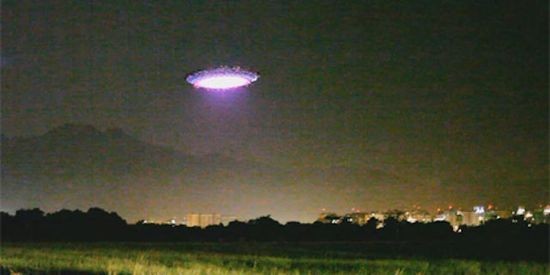
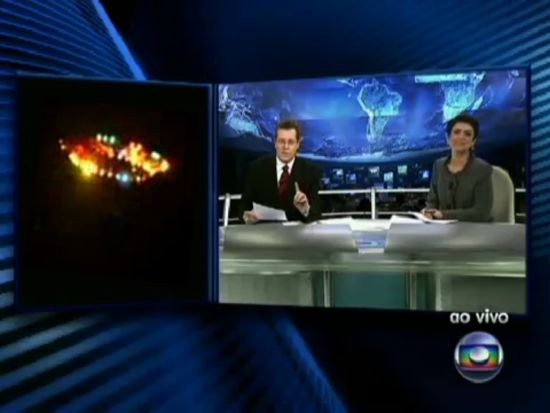 Both: Untitled (UFO) (2008- ), functional flying saucer, appearances: Baltic Sea Region, Gdańsk, Sopot; Southeast Region of Brazil and Rio de Janeiro.
Both: Untitled (UFO) (2008- ), functional flying saucer, appearances: Baltic Sea Region, Gdańsk, Sopot; Southeast Region of Brazil and Rio de Janeiro.“During our walk the subject of religion came up, and the idea of how some religious traditions involve an activity that seems to be a process of ‘going through the motions’ as a way of life, whereas in others the requirement that a position should be adopted closes people to other perspectives.”
[I like not having my mind made up entirely – to stave off the kind of closure of fixed meaning. Like the space between doubting the existence of UFOs and believing, where thinking outside yes or no is useful for the sake of asking about the question itself and everything else that might be relevant to the doubt or the belief. ‘Where does this idea come from?’ is often a much more interesting question to ask before adopting a position. ‘Why am I inclined one way or the other anyway? What does it tell me about the way I think about things?’ Religion is interesting to think about because it’s a mode of thinking that people get involved in despite the fact that many of its beliefs can’t be validated by anything but trust. Just as we hold a faith that art is significant and generates meaning, I can not control it nor do I have the capacity to define its significance. I’m interested in the desire to believe in things that can’t be proven. Ideas just exist after all and they get worked out. What’s more interesting is how they exist.]
[It does. This series began with shapes of iconic sculptures that were abstracted as flat shapes that I worked with in space. Each has its own cultural and historical significance left as a reference. They’re not chosen because of what they represent or because I like them or dislike them for that matter. They just exist in the consciousness of our culture. I made an effort to choose them arbitrarily and without thinking. That’s not really possible, but it’s the effort I made in choosing from various genres, cultures, historical periods and from images that have been around me. Trying not to think is an exercise in and of itself. So the original shapes have been abstracted in one dimension – similar to the way in which I have considered abstracting an idea so that I might get more out of it and understand it more objectively. They’ve been reduced to a two-dimensional and more concrete representation. As a result, they have a new dynamic presence in three-dimensional space because appear to move in our field of view although they’re standing still.]
“The artifice of art is a part of the idea that we may allow ourselves something like an objective view about the thing we are interpreting. Through the acknowledgment of its own existence as a real unreal thing to be thought about objectively, the UFO project encouraged onlookers to engage in philosophical questions that they might not have asked if the work tried to conceal the fact that it is a construct or had addressed the topic with a focus or interpretation that was prescribed. It creates a foil for understanding the world as a construct. It reminds me of what someone once told me about Japanese gardens:
‘It is clear that everything is highly manicured. It’s not pretending to be natural; it allows everybody to know that it’s both natural and constructed. That’s why I like the sticks holding up the tree branches, because you can see that the tree never had the idea of growing that way by itself.'”
Work by Peter Coffin is currently on view in the 4th Yokohama Triennale, “Our Magic Hour – How Much of the World Can We Know?” through November 6.
